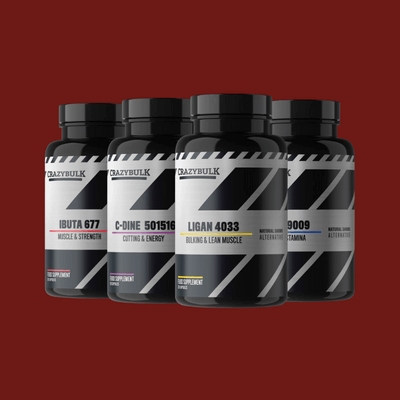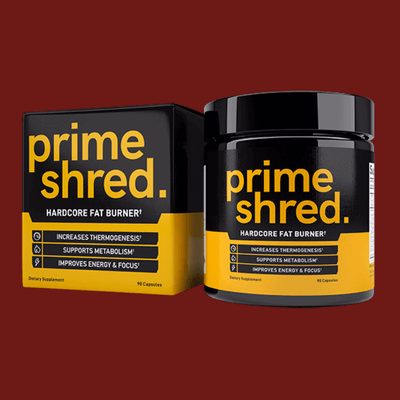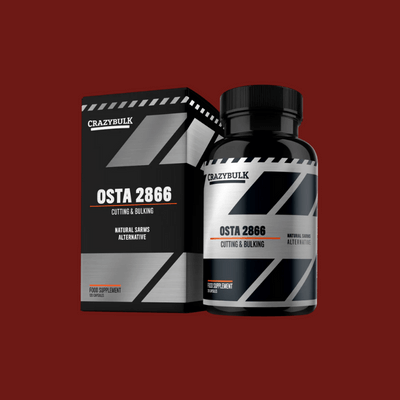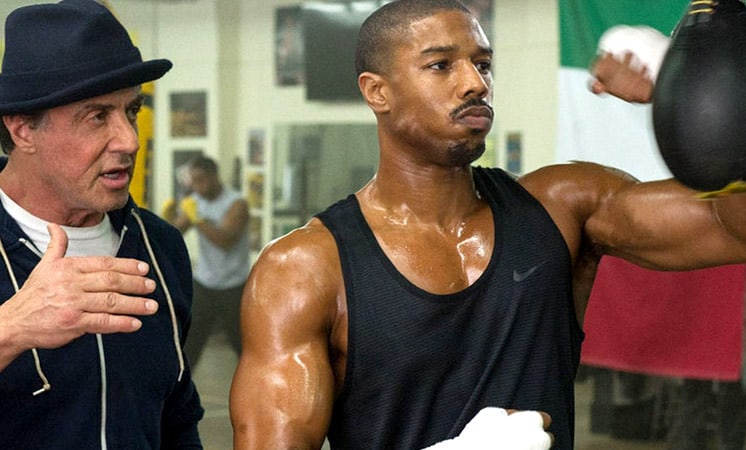
One thing I notice people are confused about is the concept of doing cardio when cutting, and I definitely understand why.
Some “gurus” say that you should do no cardio when cutting, while others say that you should do a ton of cardio when cutting. Confusing!
So, who’s right here? Well, that’s exactly what I’m about to straight out in this post:
Should you do cardio when cutting? You should do a bit of cardio when cutting because it’s healthy and can aid calorie burn if done correctly. However, research recommends that you limit the amount of cardio you do, use certain types of cardio, and place your cardio during the right time to avoid creating a large recovery deficit.
In this post I’ll discuss more in depth how you should think about cardio when cutting. I’ll go through the benefits and drawbacks of doing cardio when cutting, how much cardio you should do, what type of cardio that’s best to aim for, and finally when you should do your cardio during a cutting phase.
Let’s go.
SARMs Cutting Stack
- Cuts down excess fat
- Enhances metabolism
- Fast and effective results
- Fuels fat burning
Prime Shred
- Activates Body’s Fat-Burning Hormones
- Fast, whole body fat burning
- Vegetarian & vegan friendly
Table of Contents
Should You Bother Doing Cardio When Cutting?
As I wrote in the “answer paragraph” up in the intro, yes you should bother with cardio when cutting, but you shouldn’t do tons of it. Why this is will be structured below under the benefits and drawbacks of doing cardio when cutting:
Benefits of Doing Cardio on a Cut
1. Helps you burn more calories
Even though cardio doesn’t burn fat in and of itself (for that to happen you must create a calorie deficit), it can however help you burn more calories making it easier to achieve a calorie deficit and hence that lose body fat.
2. Improved calorie partitioning
Calorie partitioning has to do with where calories “go” in the body when you eat. I.e. will it be stored as body fat or be used to fuel the muscle building process?
It’s been shown that the most potent calorie partitioning tool we have is training. Where regular low intensity cardio activity increases nutrient uptake in our muscles, instead of the nutrients getting stored in our fat cells.
This is still in debate, and research isn’t completely sure about the effects of nutrient partitioning yet. However, it certainly won’t hurt to do some low-to moderate intensity cardio in reasonable amounts to further speed up fat loss.
3. Can improve recovery slightly
We have two types of recovery: active recovery and passive recovery. The correct kind of cardio can work as a sort of active recovery.
If you are sore from your lifting, doing some light cardio can help reduce your DOMS (Delayed Onset Muscle Soreness) which is usually an indicator of improved recovery.
The way cardio helps with recovery is by increasing blood flow to the trained muscles. When you increase blood flow, you improve oxygen and nutrient delivery to the trained muscles from the food you eat and the air you breathe.
Now, this effect might not be the biggest, research isn’t completely certain on this topic either. What we do know however, is that you certainly don’t need to do cardio to get recovered from your workouts, but it can help.
4. Cardio builds work capacity
People who only lift weights tend to lose a lot of their work capacity. Lower repetition and long rest interval type training have the greatest impact on reducing work capacity.
But is work capacity really that important if all I want is to be lean, muscular and strong?
Well, actually it is. Keeping at least a baseline of work capacity is important as it will help you recover better both during a training session and in-between sessions.
The good thing is that it takes very little cardio training to maintain baseline conditioning, a lot less than what it does to develop it in the first place. So keeping at least some cardio in your training program goes a long way when it comes to keeping baseline work capacity.
5. Improves cardiovascular health
Cardio is important for the same reason that it always is, health!
It improves the flow of oxygen throughout your body, lowers your blood pressure and cholesterol, and reduce your risk for heart disease, diabetes, Alzheimer’s disease, stroke, and some kinds of cancer.
Not only will adding some cardio in your strength training routine promote greater health, it’s also been shown that low intensity cardio reduces stress and thus promotes a healthier environment in the body.
This environment also promotes better recovery, which can lead to both better muscle growth and fat loss.
As you can see, there’s a lot of positive benefits that can come from doing cardio. With that said though, you must be very cautious with the amount, type and when you do your cardio when cutting. If you’re not, the risk of the cardio going from helpful to unhelpful can happen very rapidly.
Drawbacks of Doing Cardio on a Cut
1. Can burn too many calories
If you’re not controlling your cardio and you do too much of it, you can end up in a calorie deficit that’s way too large. If this happens you will start losing muscle mass, as it will be used for fuel, you will start feeling stressed out, and your hormones will get completely out of whack. Not a good place to end up at.
If you want to do cardio, you got to make sure that you eat more to compensate for the cardio you’re doing. With that said though, even this approach might not be the best, as we’ll discuss in the next point:
2. Can impair recovery
One of the most importnat things to keep control over when cutting is your recovery. Since you’re in a calorie deficit your recovery capacity will be compromised, meaning you can’t handle as much training anymore.
The bad thing about cardio, especially some types, is that they’re extremelly taxing on your recovery, without being beneficial for muscle growth. This means that if you do too much cardio, especially of certain types, you will lose out on your ability to recover from your strength training.
This will lead to declines in strength training performance and eventually muscle loss. We don’t want this, our goal is to keep or even build muscle and only lose body fat, as this will promote that hard, dense and aesthetic looking physique.
So, as you might realize, even if you’re upping your calories to account for the added cardio, this might still not be enough. Simply because cardio activates different intra-cellular pathways that are not specific to strength training, which more or less “steals” the recovery you need for your strength training.
In summary, yes you should bother doing a bit of cardio for the benefit reasons mentioned above, but you need to be very careful with the amount, type and when you choose to do your cardio so that you’re not bumping in to the huge drawbacks that can occur when cutting.
Read on to learn how to balance your cardio training when cutting to get the best results possible:
How Much Cardio Should You do When Cutting?
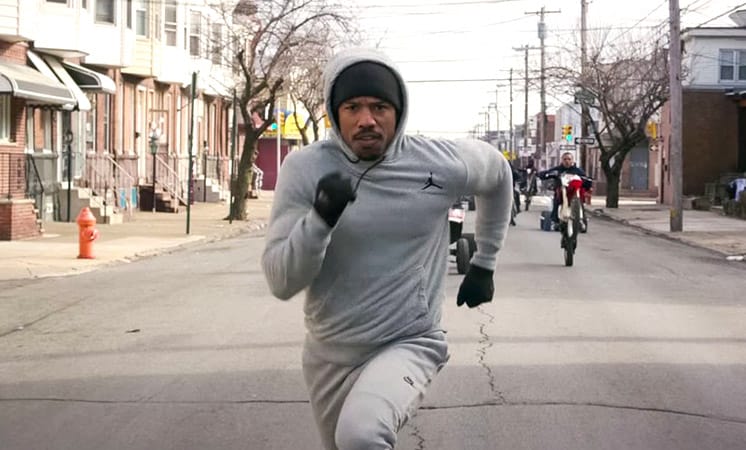
How much cardio you should do when cutting is the first and most importnat factor to set up correctly if you want the best fat loss results while also feeling your best in the process.
According to Eric Helms a good rule of thumb when it comes to the amount of cardio to do when cutting are the following:
- Half the time you spend lifting weights per week.
So, if you spend 90 minutes 3 times per week lifting weights (4.5 hours), which is the amount of weight training I recommend that most beginner to intermediate trainees do for fat loss, then you can get away with 270 minutes of cardio (2.25 hours) per week.
This amount of cardio is usually within the safe zone from bumping into the potential negative drawbacks of doing cardio when cutting as mentioned above. With that said though, to minimize the risk of too high calorie burn and impaired recovery the type of cardio you do also matters, even within the numbers just mentioned:
What Type of Cardio Should You do When Cutting?
When it comes to the types of cardio one can do there are two different categories:
- The intensity modality
- The exercise modality
Let’s look at these one by one:
1. The Intensity Modality
When it comes to the intenisty modality of cardio training there are generally three different types people refer to:
- Low-intensity steady state (LISS)
- Moderate-intensity steady state (MISS)
- High-intensity training (HIT)
LISS is the type of cardio that feels easy and that you can do for long periods of time, such as walking or jogging slowly. I.e the intenisty is low.
MISS is the type of cardio that feels moderately challenging, such as running or biking at a relatively high tempo (depening of course on the cardio fitness of an individual). I.e. the intensity is moderate.
HIT is the type of cardio that feels very challenging, such as sprinting or CrossFit where your goal is to go all out, usually done in intervals since it’s nearly impossible to keep up this intensity for longer periods. I.e. the intensity is high.
A good way to better illustrate these different types of cardio is by using an RPE (rate of perceived exertion) table, where an RPE of 1 is very light effort and an RPE of 10 is max effort:
| Intensity | RPE | How it feels |
|---|---|---|
| LISS
MISS
HIT |
1-2
3-4 5 6 7 8 9 10 |
Very light effort. You can talk with ease. Light effort. You can talk with almost no difficulty. Moderately light effort. You can talk comfortably with minor difficulty. Moderate effort. You can talk with minor difficulty. Moderately high effort. Talking is difficult. High effort. Talking is very difficult. Very high effort. Talking is maximally difficult. Maximal effort. Talking is impossible. |
Why The Type of Intensity Modality Matters When Cutting
Doing MISS (moderate-intenisty steady state cardio) is essentially endurance training. The adaptations and work required to produce endurance adaptations can interfere with the training and adaptations required to generate muscular strength and growth. The interference effect gets is increasingly more dominant when cutting as well.
The reason why MISS cardio is usually negative for strength and muscle growth is because it is overloading training that depletes glycogen quickly and also sends strong intra-muscular signals to adapt the body for endurance and not strength.
LISS (low-intensity steady state cardio) on the other hand would be below the threshold of producing overload and hence wouldn’t be an issue. For someone who’s in decent shape and are lifting weights, casual LISS cardio is not an adaptive stress, so it won’t cause endurance adaptations in the body. Therefore, interference is not an issue with low-intensity cardio.
However, the calorie burn is much lower when doing low-intensity cardio compared to higher intensities, and for that reason, you have to do more of it for it to add up.
What about HIT (high-intenisty cardio)?
Well, high-intensity cardio is very taxing, and unlike lower-intensity cardio cannot be done continuously for very long unless you are a very well-trained anaerobic athlete. This is one of the reasons you often hear people talk about high-intensity interval training or HIIT. HIIT is when you do a burst of maximal-intensity cardio, followed by a rest period and then repeat.
This cardio type can lead to similar adaptations as lower-intenisty modalities can, but in less total time. The risk of interference with strength training is also lowered when doing HIIT as the high-intensity nature of this type of cardio is more similar to resistance training. Finally, the higher the intensity, the greater the increase in metabolic rate will be in the short-term post training. High-intensity exercise provides a short-term, small, but significant increase in metabolic rate while low-intensity does not.
So, does this mean that HIT training is the best kind for fat loss? Well, unfortunately, the same issues that come with moderate-intensity cardio also come with high-intensity cardio. Which is that HIT also “steals” recovery away from the more specific weight lifting that you could do instead.
Now, even though HIT better activates strength and muscle developing intra-cellular pathways as opposed to what MIIS do, it’s still doesn’t do it nearly as well as what heavy weight lifting do.
Furthermore, HIT has also been shown to lead to more injuries than the other cardio modalities, especially if it’s done with running. And we all know that an injury will set you back more than anything else. Finally, the risk of getting an injury is higher during a cutting phase.
What Type of Cardio Intenisty Modality Should You do When Cutting?
To get the best results possible when cutting, here’s the suggested cardio intensity modality order to follow
- Low-intensity steady state (LISS) – You can do a lot of this cardio when cutting without any negative effects on your strength and muscle development.
- High-intensity training (HIT) – If you want to go for higher intenisty then HIT is recommended above MISS since it’s more similar to weight training. (Cap the number of HIIT sessions at one to two sessions per week that last no more than 30 minutes.)
- Moderate-intensity steady state (MISS) – Minimize the amount of MISS you do since it “steals” your recovery and strongly activates endurance intra-cellular pathways, which counteracts the strength and muscle developing pathways.
2. The Exercise Modality
The kind of exercise you choose to do for cardio can also be important if you want great results.
Exercises that causes large impact on the body, mainly through eccentric action, such as running or incline walking has been shown to be negative for strength and muscle development. In fact, cycling appears to interfere the least with resistance training adaptations.
Eccentric actions are essentially when your muscle lengthens during contraction, often performed when guiding a load into place or decelerating a load; like what your bicep is doing when you slowly bring the bar or dumbbels down when curling. In endurance training, this is how your body brakes and controls your movement. High impact forces like this can create joint strain, and a high volume of high force eccentric actions can create a lot of muscle soreness. So, you can deplete the muscle of its energy and also go into training with sore joints and muscles if this kind of cardio training has beed done excessively.
However, if the cardio exercise you choose doesn’t have an impact component, like cycling, swimming, or the elliptical then you would cause far less wear and tear of your body and stil be able to perform great during your weight lifting sessions.
Cycling is my favourite cardio modality for this reason when I’m cutting. If you want to learn more about cycling and how it can help with calorie burn, without stressing your body too much, check out this great post by Daniel Atlas.
What Type of Cardio Exercise Modality Should You do When Cutting?
To get the best results possible when cutting, here’s a suggested cardio exercise modality order to follow:
- Cycling – Great low-impact cardio
- Swimming – Great low-impact cardio
- Rowing – Great low-impact cardio
- Elliptical – Great low-impact cardio
- Skiing (ski-erg machine or out in the snow) – Moderate-impact cardio
- Lifting light weights for cardio – Moderate-impact cardio
- Power walking – Moderate-impact cardio
- Incline walking – Moderate-to-high-impact cardio
- Jogging – High-impact cardio
- Skipping ropes – Very-high-impact cardio
- Running – Very-high-impact cardio
When cutting aim to do mostly the 1-5 exercises, some 6-8 if you want, and avoid 9-11 for best results.
*It’s been shown that high-impact cardio modalities typically stresses only the lower body, so if you don’t care much about leg strength and muscle development then high-impact cardio exercises is fine to do.
Where Should You Place Your Cardio Sessions When Cutting?
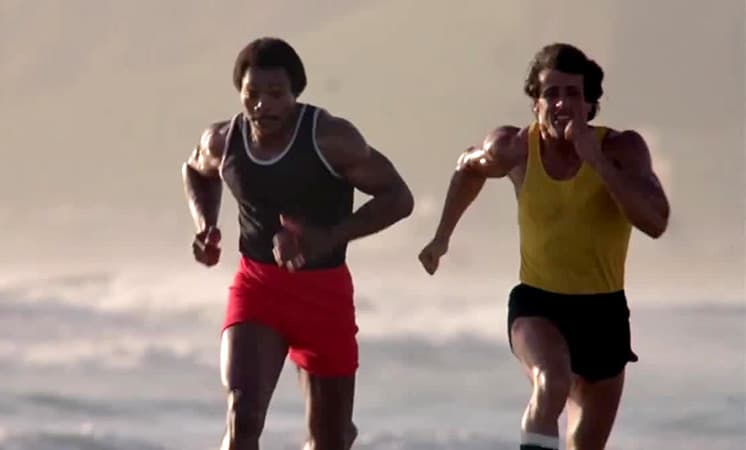
Finally, let’s look at the last cardio factor that you should set up correctly to get the best results possible when cutting, namely where you should place your cardio sessions.
It’s been shown that doing strength training and cardio in the same session is suboptimal for strength and muscle development. This was shown in a study by Robineau et al where they looked at whether sprinting after full body intense workouts with a recovery time of 0, 6, or 24 hours between strength and aerobic sequences influences the responses to a combined training program.
The group doing their sprint intervals directly after strength training gained less strength than the other three groups, but there were no differences in strength gains between the strength-only group and the two groups resting at least six hours between their strength training and their sprint intervals. So, resting at least 6 hours between sessions seems to be optimal for strength adaptations.
Research isn’t completely clear on whether it’s better to spread out your weight training and cardio training on separate days. Currently it seems that as long as the cardio is done 6 hours after weight training then results will be pretty much the same. But, from my anecdotal experience separating the sessions on two different days is better for recovery.
Also, a recent meta-analysis from 2017 by Murlasits et al showed that, if you need to do strength training and cardio within the same session, then doing it after lifting is better for strength improvements compared to doing it before.
I’ve been writing more in depth about the combination effects of strength training and cardio in this post.
Where Should You Place Your Cardio When Cutting?
To get the best results possible when cutting, here’s the suggested times at which you should place your cardio:
- Best cardio placement – At least 6 hours after your lifting session.
- Okay cardio placement – Directly after your lifting session.
- Bad cardio placement – Right before your lifting session.
Here’s a routine that I’ve found work great when cutting:
Sample Cutting Training Routine: 3 Day Strength 2 Day Cardio
Monday: Upper-body Weight Training
Tuesday: Cardio Training (LISS)
Wednesday: Lower-body Weight Training
Thursday: Rest
Friday: Upper-body Weight Training
Saturday: Cardio Training (HIT)
Sunday: Rest
This is a 3 day per week upper/lower split with just 1 leg workout, since cardio also train legs (especially HIT). This is a great routine to use when cutting, since it’s fairly easy to recover from.
What’s Next?
Cardio is just a small part of the overall picture when it comes to setting up a successful cut. The more important parts for success are a well set up calorie deficit, macronutrient intake and weight training program.
If you want to learn how to set up these parts correctly according to your starting point, then I recommend reading my completely free guide: How to build an aesthetic physique, which you can read here!

